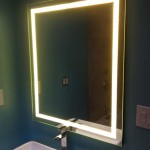How Do I AirPlay Mirror My iPhone Screen To Macbook Pro?
AirPlay mirroring allows users to stream or mirror their iPhone, iPad, or iPod touch screen to an Apple TV or a Mac running macOS Monterey or later. This functionality proves invaluable for presentations, sharing photos and videos with a larger audience, or troubleshooting device issues. This article will explore the various methods available to mirror an iPhone screen to a Macbook Pro.
Prerequisites for AirPlay Mirroring
Before attempting to mirror an iPhone screen, specific requirements must be met. Both devices, the iPhone and the Macbook Pro, should be connected to the same Wi-Fi network. Ensure that the iPhone is running iOS 15 or later and the Macbook Pro is equipped with macOS Monterey or a later operating system version. Certain older Macs may not support AirPlay mirroring even with a compatible operating system, so confirming compatibility with Apple's official documentation is recommended.
Mirroring with AirPlay Receiver Software
For Macbook Pros running macOS Monterey or later, mirroring can be accomplished through built-in AirPlay receiver functionality. This functionality eliminates the need for third-party applications. Users can select their Macbook Pro directly from the AirPlay menu on their iPhone.
Step-by-step instructions for using the built-in AirPlay receiver:
1. Ensure both the iPhone and Macbook Pro are connected to the same Wi-Fi network.
2. On the iPhone, open Control Center. The method for accessing Control Center varies depending on the iPhone model. On iPhones with Face ID, swipe down from the top-right corner of the screen. On iPhones with a Home button, swipe up from the bottom edge of the screen.
3. Tap the "Screen Mirroring" button. It resembles a rectangle with a triangle at the bottom.
4. Select your Macbook Pro from the list of available AirPlay devices.
5. If prompted, enter the AirPlay code displayed on your Macbook Pro into your iPhone. This step provides an added layer of security, preventing unwanted connections.
6. The iPhone screen will now be mirrored on the Macbook Pro's display.
7. To stop mirroring, return to the Control Center on the iPhone, tap "Screen Mirroring," and select "Stop Mirroring."
Mirroring with Third-Party Applications (for older macOS versions)
If the Macbook Pro is running an older macOS version that doesn't natively support AirPlay receiving, third-party applications can facilitate screen mirroring. Several reputable software options are available, each offering varying features and price points. Researching and selecting an application that aligns with specific needs is advised. When using third-party applications, ensure both the iPhone and Macbook Pro are on the same network, and follow the application’s specific instructions for initiating screen mirroring.
Troubleshooting AirPlay Mirroring Issues
Occasionally, users may encounter issues with AirPlay mirroring. Some common problems and their solutions are detailed below:
1. Devices Not on the Same Network: Double-check both the iPhone and Macbook Pro are connected to the same Wi-Fi network. A simple restart of the Wi-Fi on both devices can resolve this issue.
2. Firewall Interference: Occasionally, a firewall on the Macbook Pro might block AirPlay connections. Temporarily disabling the firewall during mirroring can help identify if it's the source of the problem. If the firewall is indeed the issue, adjust its settings to allow AirPlay connections.
3. Outdated Software: Ensure both devices are running the latest versions of their respective operating systems. Software updates often include bug fixes and performance improvements that can resolve connectivity issues.
4. Network Congestion: A congested network can negatively impact AirPlay performance. Try reducing the number of devices connected to the network or closing bandwidth-intensive applications.
5. Hardware Limitations: Older Macs might have hardware limitations that prevent AirPlay mirroring, even with compatible software. Consulting Apple's documentation to confirm hardware compatibility is crucial.
Optimizing Performance during AirPlay Mirroring
Several strategies can optimize the performance of AirPlay mirroring for a smoother, more reliable experience.
Reduce Network Traffic: Minimizing the number of devices using the Wi-Fi network and closing unnecessary applications on both the iPhone and Macbook Pro can improve streaming quality.
Close Unnecessary Applications: Closing applications running in the background on both devices frees up system resources and can lead to better performance.
Adjust Screen Brightness: Lowering the screen brightness on the iPhone can reduce battery drain and improve mirroring performance, especially if the device is not plugged into a power source.
By following these steps and troubleshooting tips, users can utilize the power and convenience of AirPlay mirroring to enhance their workflow and share content seamlessly between their iPhone and Macbook Pro.

How To Mirror Iphone Mac Without Wi Fi

How To Use Apple Airplay Mirror Your Iphone Mac Screen On Tv Roku And More Cnet

How To Use Apple Airplay Mirror Your Iphone Mac Screen On Tv Roku And More Cnet

2024 Updated How To Mirror Iphone Mac With 5 Methods

How To Mirror Iphone Mac Wirelessly Full Guide

Stream Audio And From Your Mac With Airplay Apple Support

2024 Updated How To Mirror Iphone Mac With 5 Methods

How To Airplay From Iphone Or Ipad Mac 9to5mac

Use Airplay To Stream Or Mirror The Screen Of Your Iphone Ipad Apple Support

How To Mirror Iphone Ipad Screen Mac Efficiently 2024 Solutions








